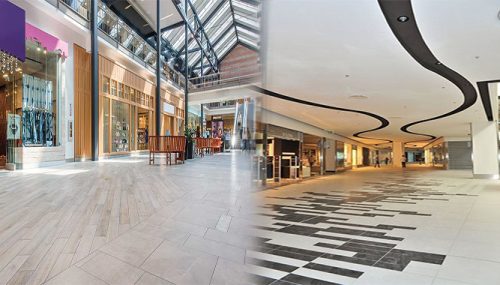Decorative pedestrian flooring plays a crucial role in enhancing the aesthetics, functionality, and overall experience of malls. As one of the most frequented public spaces, malls must carefully consider the design and materials used for pedestrian flooring to create a welcoming and enjoyable environment for shoppers. In this article, we will explore the purpose and benefits of decorative pedestrian flooring in malls.
1. Creating a Welcoming Atmosphere
Decorative pedestrian flooring serves as a focal point in the overall design of a mall. The choice of artistic patterns, colors, and textures can contribute to creating a welcoming and visually appealing atmosphere for visitors. The flooring design can set the tone for the entire mall, influencing visitors’ first impressions and overall feelings of comfort and satisfaction.
2. Enhancing Aesthetics and Branding
The design of pedestrian flooring can reflect the unique branding and identity of a mall. Incorporating custom logos, patterns, or color schemes can reinforce the mall’s brand image and create a cohesive aesthetic throughout the space. A carefully chosen design can also serve as a wayfinding element, guiding visitors through the mall and enhancing their overall experience.
3. Promoting Safety and Comfort
Beyond aesthetics, decorative pedestrian flooring is designed to prioritize the safety and comfort of mall visitors. Textured or slip-resistant surfaces can help prevent slip and fall accidents, especially in areas prone to spills or wet conditions. Additionally, the use of durable and resilient materials ensures that the flooring can withstand heavy foot traffic, providing a comfortable and secure footing for shoppers.
4. Zoning and Wayfinding
Pedestrian flooring can be used strategically to designate different zones within the mall, such as retail areas, food courts, or entertainment spaces. By using different flooring designs or materials, malls can visually delineate various sections and aid in wayfinding for visitors. This zoning technique can contribute to a more organized and intuitive layout, enhancing the overall navigation experience within the mall.
5. Maintaining Hygiene and Cleanliness
The choice of pedestrian flooring is critical for maintaining a clean and hygienic environment within the mall. Non-porous, easy-to-clean materials can facilitate regular maintenance and contribute to a clean and sanitary space. Additionally, flooring materials that resist staining and are impervious to water can help ensure a pristine and presentable appearance.
Decorative pedestrian flooring in malls serves multiple essential purposes, including aesthetics, branding, safety, wayfinding, and hygiene. By carefully selecting and designing the pedestrian flooring, malls can create a cohesive and inviting environment that enhances the overall shopping experience for visitors. Whether through custom patterns, durable materials, or strategic zoning, decorative pedestrian flooring plays a vital role in shaping the identity and functionality of modern malls, ultimately contributing to customer satisfaction and loyalty.

